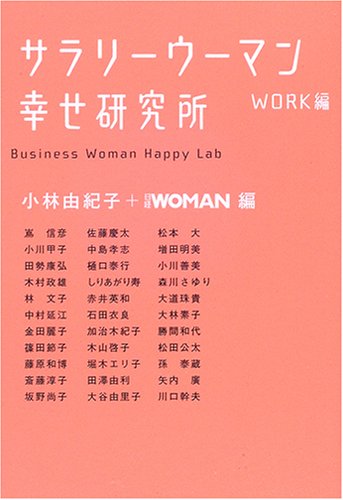1 0 0 0 リハビリテーション部署における産休育休の取得状況
- 著者
- 小林 由紀子 江連 亜弥 小澤 真美子
- 出版者
- 公益社団法人 埼玉県理学療法士会
- 雑誌
- 理学療法 - 臨床・研究・教育 (ISSN:1880893X)
- 巻号頁・発行日
- vol.23, no.1, pp.86-88, 2016
リハビリテーション部署の産前産後休業および育児休業(以下,産休育休)の取得状況を検証するため,医療法人敬愛会リハビリテーション部における産休育休の取得状況と妊産婦がかかえる問題について検証した。方法は,医療法人敬愛会リハビリテーション部の職員を対象に,過去10年間の職員総数,男女比,経験年数,離職者数,産休育休取得者数等を調査した。また,産休育休取得者には,産休取得時の経験年数,産休育休の期間についてアンケートを実施した。結果は,職場の動向について,離職率は近年横ばいとなり,療法士の経験年数は中堅層以上が若手層を上回っていた。産休育休取得者は増加傾向が認められた。アンケート結果では,産前休暇は,約3割が体調不良により早めに取得した。育休復帰時期は,半数近くが予定より早く復帰した。産休育休取得者に増加傾向が認められたのは,職場が安定し中長期的な人生設計が立てやすくなったことや,子育て世帯によるロールモデルの蓄積などとの関連性が推察された。育休終了時期に関しては,保育所不足の問題が大きく関与していた。<br>
- 著者
- 小林由紀子 石井 有理 寺本 祐之
- 出版者
- 特定非営利活動法人 日本栄養改善学会
- 雑誌
- 栄養学雑誌 (ISSN:00215147)
- 巻号頁・発行日
- vol.77, no.2, pp.46-53, 2019-02-01 (Released:2019-05-17)
- 参考文献数
- 15
【目的】社員食堂における減塩食と減塩に関する情報の提供が健常者の24時間尿中Na排泄量(食塩換算量)におよぼす影響を検討する。【方法】試験は単群オープン試験とし,株式会社ファンケルの社員で20~65歳の健常な男女20名に,減塩に関する情報提供を実施し,1食当たり食塩量 2 g以下の減塩食を9週間,平日の昼食に社員食堂で摂取させた。主要評価項目を24時間尿中Na排泄量(食塩換算量)とし,塩味認知閾値および好みの食塩濃度を副次評価項目とした。【結果】24時間尿中Na排泄量(食塩換算量)は介入前 9.8 g/dayと比較して3週間後 6.8 g/day(p=0.001),9週間後 6.0 g/day(p<0.001)といずれも有意な低下であった。また,塩味認知閾値は,介入前0.136%と比較して3週間後は0.085%(p=0.008),9週間後は0.084%(p=0.012)といずれも有意に低下した。好みの食塩濃度についても,介入前0.63%と比較して3週間後0.50%(p=0.002),9週間後0.40%(p<0.001)はいずれも有意な低下であった。【結論】減塩食と減塩に関する情報の提供は,24時間尿中Na排泄量(食塩換算量)の低下と塩味に対する味覚感度の改善に有用であることが示唆された。
1 0 0 0 サラリーウーマン幸せ研究所
- 著者
- 小林由紀子 日経WOMAN編
- 出版者
- 日本経済新聞社
- 巻号頁・発行日
- 2006
1 0 0 0 OA 認知機能障害と情動障害に対する早期アプローチが有効であった外傷性脳損傷の2症例
- 著者
- 小林 由紀子 赤星 和人 原 行弘 辻内 和人 岡村 陽子
- 出版者
- 社団法人 日本リハビリテーション医学会
- 雑誌
- リハビリテーション医学 (ISSN:0034351X)
- 巻号頁・発行日
- vol.42, no.11, pp.778-782, 2005 (Released:2006-09-22)
- 参考文献数
- 16
In the rehabilitation of traumatic brain injury, emotional disorders such as a quick temper, depression and irritability are a critical problem, as well as cognitive dysfunctions such as impairment of attention and memory. In addition, it is rare that they are completely isolated and cognitive dysfunction and emotional disorders tend to have an influence on each other. In other words, the stress caused by cognitive dysfunction induces an aggressive emotional disturbance, and unrest of mood accelerates cognitive dysfunctions such as memory and judgment. Therefore, it is important to consider their emotional states when we start rehabilitation for patients with traumatic brain injury. We had a valuable experience in early rehabilitation of two patients with traumatic brain injury. We had very good results by thinking about the emotional disorder first, and thereafter training for the cognitive dysfunction. Case 1, a young male, was a computer programmer. After suffering a traumatic brain injury, he could not think logically and he had many emotional problems with his mother. Case 2 was a middle-aged housewife. She became depressive and negative towards rehabilitation, because of her memory problems post traumatic brain injury. We administered a rehabilitation regime which attached great importance to treating the emotional disorders affecting these two patients. As a result, in the early phase, we were able to make progress in cognitive rehabilitation as well as improving their emotional problems by our intervention, and they overcame their cognitive dysfunctions and resumed their normal daily lives in a month.
